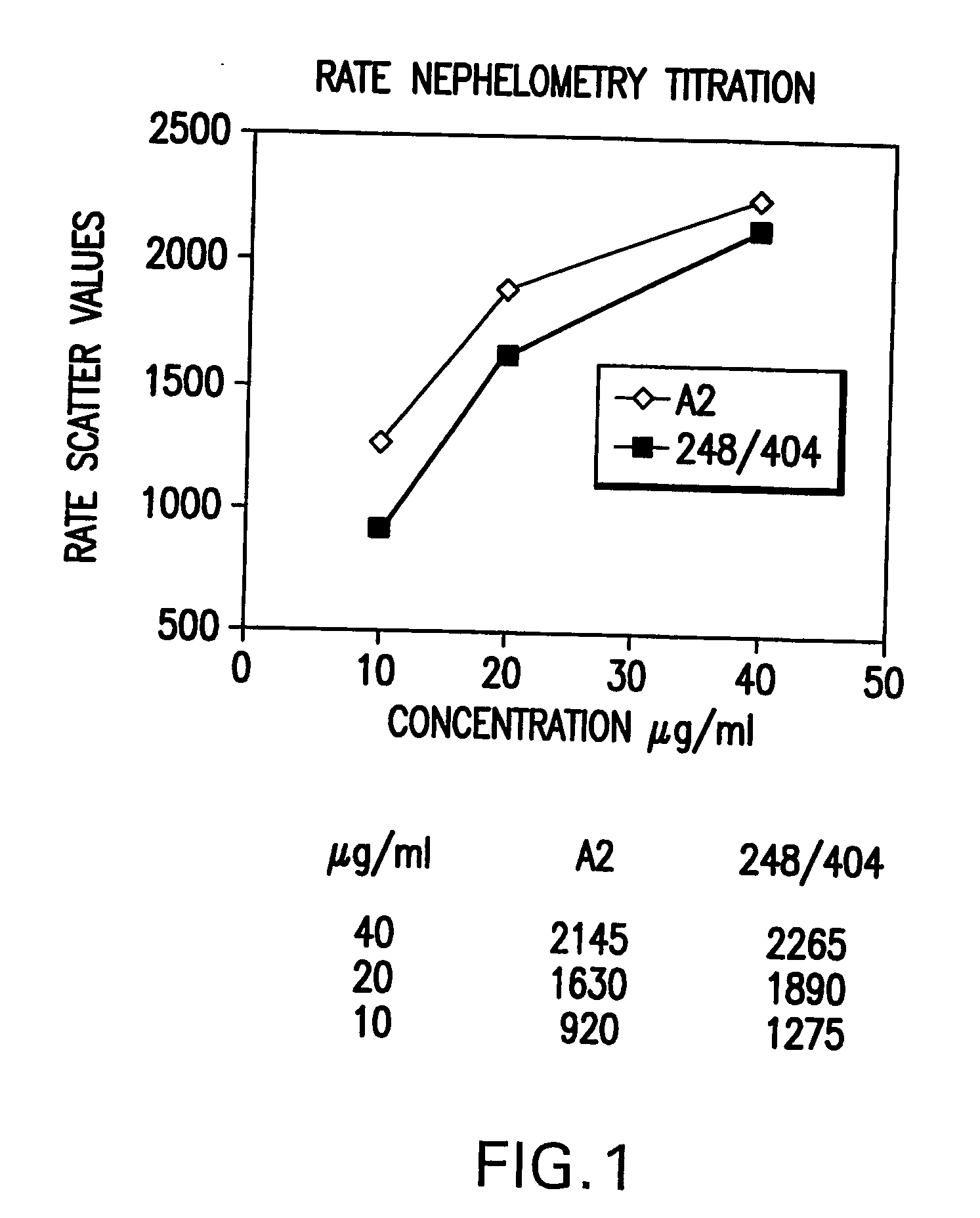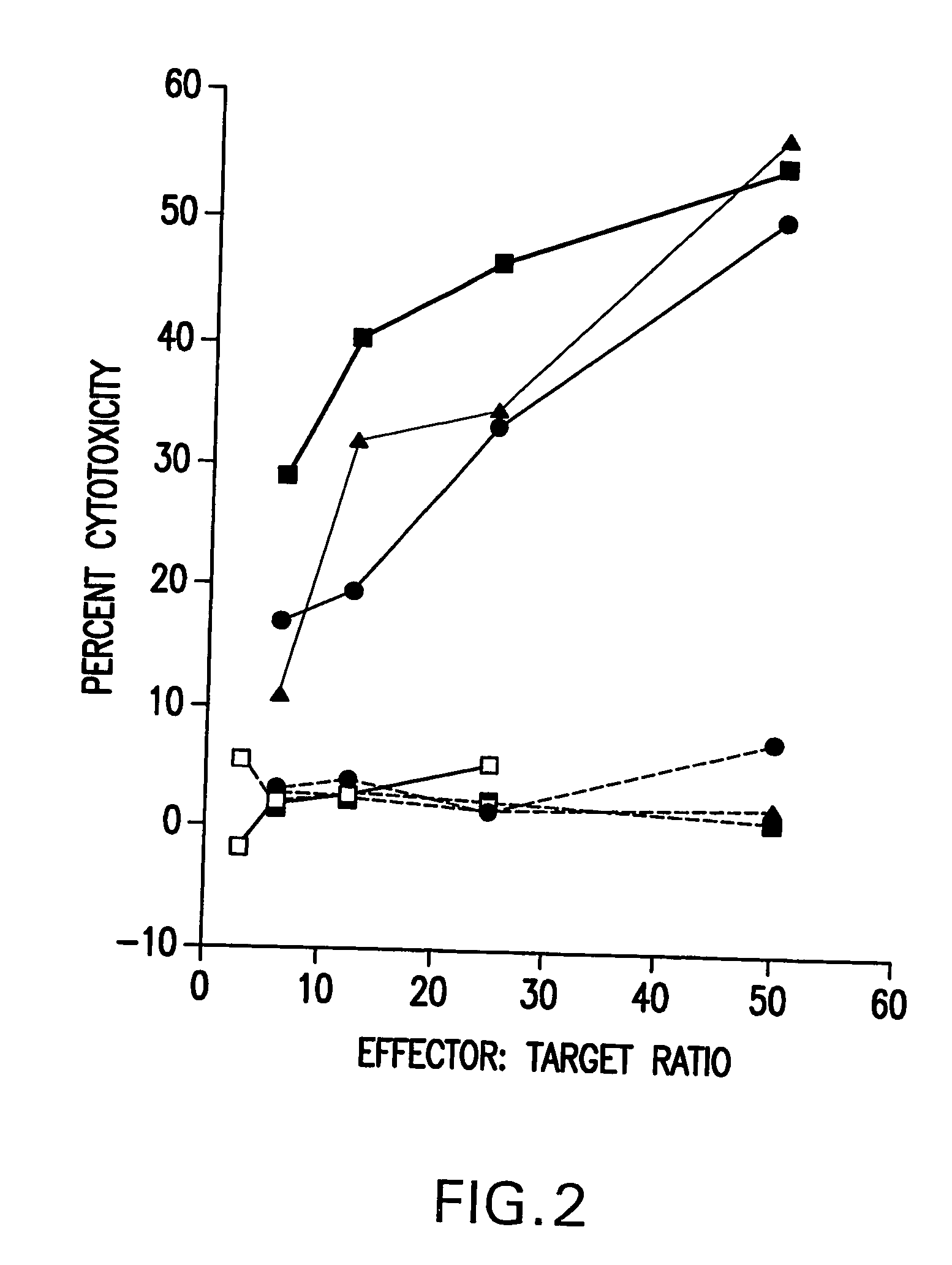Process for increasing rsv surface glycoprotein yields using a mutant strain of rsv
a technology of surface glycoprotein and rsv, which is applied in the field of process for increasing rsv surface glycoprotein yields using a mutant strain of rsv, can solve the problem that there is no immunogenic composition available to prevent or attenuate rsv-related illnesses
- Summary
- Abstract
- Description
- Claims
- Application Information
AI Technical Summary
Benefits of technology
Problems solved by technology
Method used
Image
Examples
example 1
[0053] This Example illustrates the screening method utilized to identify attenuated strains of RSV capable of producing high yields of RSV fusion (F) protein in VERO cell microcarrier cultures.
[0054] A VERO cell culture was initiated from frozen ampoules of Wyeth's qualified Working Cell Bank. The ampoules were thawed and inoculated into cell factories (Nunc) for the initial stage. The cells were grown at 37° C.±0.5° C. without CO2. The media used for cell cultivation was DMEM supplemented with 10% (v / v) FBS. Two 100% media exchanges were performed for optimal cell growth. Upon confluency, cells were released from the surface by treatment with trypsin and inoculated onto Cytodex 1 microcarriers in a 3.6-L (working volume) bioreactor equipped with an environmental control. The cells were cultivated in the bioreactor under controlled conditions until greater than 90% confluency (3-4×106 cells / mL) was reached. The cells were infected with an attenuated RSV A2 strain at a multiplicity...
example 2
[0055] This Example illustrates the production of RSV on a mammalian cell line on microcarriers in a 30-L controlled bioreactor.
[0056] A VERO cell culture was initiated from frozen ampoules of Wyeth's qualified Working Cell Bank (BB-MF 6735) at passage 134. The ampoules were thawed and inoculated into 6000 Cm2 cell factories (Nunc) for the initial stage at a cell density of 2±0.5×104 cells / cm2. The cells were grown at 37° C.±0.5° C. without CO2. The media used for cell cultivation was DMEM supplemented with 10% (v / v) FBS. Two 100% media exchanges were performed for optimal cell growth. Upon confluency, cells were released from the surface by treatment with trypsin and inoculated onto Cytodex 1 microcarriers at 0.5-0.8×106 cells / mL in a 3.6-L (working volume) bioreactor equipped with an environmental control. The cells were cultivated in the bioreactor under controlled conditions until greater than 90% confluency (3-4×106 cells / mL) was reached. Cells were then trypsinized off the mi...
example 3
[0057] This Example illustrates the process of purifying subunit RSV PFP-3 from a viral concentrate,
[0058] Sterile lysis buffer [10% (v / v) Triton-X-100 in PBS, pH 7.4±0.1] was added to the bioreactor to a final detergent concentration of 0.5% (v / v). The culture was agitated during the lysis period of 2-3 hours at 30±0.5° C. At the end of lysis in situ, the microcarriers were allowed to settle and the lysed culture supernatant was clarified through a Seitz® 700 (6-15 μm) cellulose depth filter (0.3 ft2 / L harvest) followed by a Seitz® 100 (1-3 μm) cellulose depth filter (0.3 ft2 / L harvest). The clarified supernatant was aseptically transferred to a holding vessel for storage at 2-8° C. prior to purification.
[0059] The clarified viral harvest was concentrated five- to 10-fold using either spiral wound or plate-and-frame ultrafiltration (0.5 ft2 / L original harvest) and diafiltered with about 10 volumes of 75 mM Tris-Cl, 0.1% Triton X-100, pH 8 (>100 L) utilizing a 30K Amicon spiral wo...
PUM
| Property | Measurement | Unit |
|---|---|---|
| Temperature | aaaaa | aaaaa |
| Immunogenicity | aaaaa | aaaaa |
| Strain point | aaaaa | aaaaa |
Abstract
Description
Claims
Application Information
 Login to View More
Login to View More - R&D
- Intellectual Property
- Life Sciences
- Materials
- Tech Scout
- Unparalleled Data Quality
- Higher Quality Content
- 60% Fewer Hallucinations
Browse by: Latest US Patents, China's latest patents, Technical Efficacy Thesaurus, Application Domain, Technology Topic, Popular Technical Reports.
© 2025 PatSnap. All rights reserved.Legal|Privacy policy|Modern Slavery Act Transparency Statement|Sitemap|About US| Contact US: help@patsnap.com


